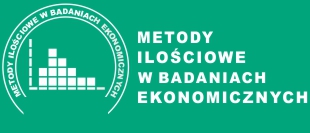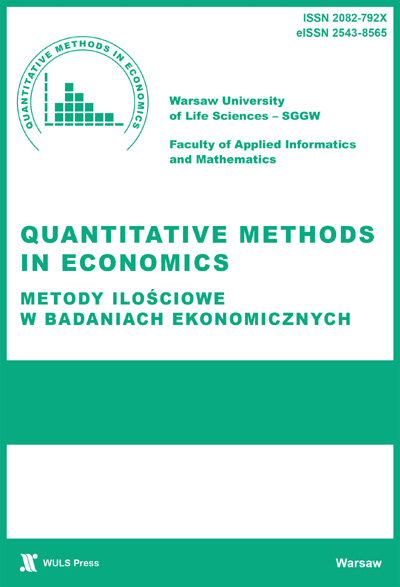PRIVATE PENSION SYSTEM IN ALBANIA
Main Article Content
Abstrakt
The role of private pensions in many developed economies has grown significantly in the past two decades. The situation is different for developing economies where private pensions are a new phenomenon and have a very low weight in the sector. Despite the diversity of retirement systems, these countries in many cases are characterized from low education level of the population for this service and not well-defined investment policy from the companies offering this product. The low education level implies that the publicity should be as simple as possible to be understood from considerable population and well–specified policies increase the self-confidence of the interest group. Developing economies in the same time are characterized even from high informal employment rate, influencing directly privet and public pension system. In this situation, new reforms and actions should be made in order to develop and incentivize the pension market. In the same time it is very important the pension model that has to be used, which should be in accordance with the economic, political and social characteristics of the country. The same can be said even for Albania, when it comes to pension system. The pension scheme in Albania consists of two pillars. The first pillar is PAYG funded system, publicly managed and “defined benefits” (DB) where benefits are calculated according to a specific formula based on the number of working-years, wages earned, as well as the contributions paid. The second pillar, as per international definition of it, does not exist in Albania. Instead there is a third pillar, privately managed, voluntary contributed and defined contributions (DC). During the past decade, the first pillar has demonstrated certain problems, like low net replacement rate, high dependency rate and considerable high level of evasion of contributions payment. The third pillar is a new one in Albania and the size and the development of it is very modest, as at the end of 2014, this market accounted for 0.05% of the Gross Domestic Product, or in number of contributors only 8,491. Despite the small number it has been increased, so compared with 2013 the number has been increased with 7.66%. The paper will be focused on the detailed analyze of pension system in Albania, and more concretely in the privet one. The objective is to give a detailed overview of this sector in Albania, with its difficulties and obstacles that are encountered and the risks faced today and in the future.
Article Details
Jak cytować
Kołodziejczak, W., Dragoshi, G., & Shahini, L. (2016). PRIVATE PENSION SYSTEM IN ALBANIA. Metody Ilościowe W Badaniach Ekonomicznych, 17(4), 138–148. Pobrano z https://qme.sggw.edu.pl/article/view/3891
Statystyki
Downloads
Download data is not yet available.
Rekomendowane teksty
Podobne artykuły
- Włodzimierz Kołodziejczak, Nataliya Perederiy, ENERGY-SAVING TECHNOLOGIES IN AGRICULTURE OF UKRAINE , Metody Ilościowe w Badaniach Ekonomicznych: Tom 17 Nr 4 (2016)
Możesz również Rozpocznij zaawansowane wyszukiwanie podobieństw dla tego artykułu.
Inne teksty tego samego autora
- Feliks Wysocki, Włodzimierz Kołodziejczak, METODA PRZEPŁYWÓW NA RYNKU PRACY (IOA) I WIELOMIANOWA ANALIZA LOGITOWA W BADANIACH AKTYWNOŚCI EKONOMICZNEJ LUDNOŚCI , Metody Ilościowe w Badaniach Ekonomicznych: Tom 17 Nr 1 (2016)
- Feliks Wysocki, Włodzimierz Kołodziejczak, Determinanty zmiany stanu aktywności ekonomicznej ludności w Polsce , Metody Ilościowe w Badaniach Ekonomicznych: Tom 13 Nr 1 (2012)
- Włodzimierz Kołodziejczak, Artur Ribaj, THE THREE LINES OF DEFENCE MODEL AND BANKS IN ALBANIA , Metody Ilościowe w Badaniach Ekonomicznych: Tom 17 Nr 4 (2016)
- Włodzimierz Kołodziejczak, Nataliya Perederiy, ENERGY-SAVING TECHNOLOGIES IN AGRICULTURE OF UKRAINE , Metody Ilościowe w Badaniach Ekonomicznych: Tom 17 Nr 4 (2016)
- Jonida Bicoku, Gert Dragoshi, Fatmir Memaj, INTERNAL MIGRATION OF LABOR AS A REGULATORY MECHANISM IN THE AREA OF A SINGLE CURRENCY. THE EUROZONE AND ALBANIA , Metody Ilościowe w Badaniach Ekonomicznych: Tom 17 Nr 4 (2016)
Licencja
Publikowane artykuły dostępne są na warunkach Open Access na zasadach licencji Creative Commons CC BY-NC – do celów niekomercyjnych udostępnione materiały mogą być kopiowane, drukowane i rozpowszechniane. Autorzy ponoszą opłatę za opublikowanie artykułu.

